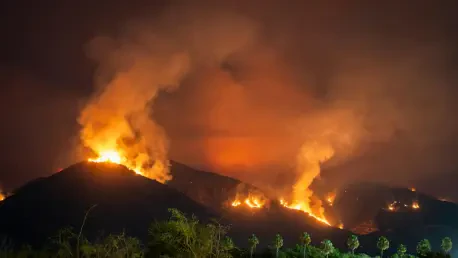Metro Detroit faces a new environmental challenge as smoke from Canadian wildfires introduces concerning levels of air pollution, triggering an air quality advisory. This alarming development underscores the intricate relationship between environmental phenomena and public health. These advisories, issued by the Michigan Department of Environment, Great Lakes, and Energy, pinpoint the concerning rise in particulate matter, especially PM2.5, which reached a concerning Air Quality Index (AQI) level of 108. This rating categorizes the air quality as “Unhealthy for Sensitive Groups” (USG), posing significant health risks to various vulnerable demographics. Such levels accentuate the pressing need for comprehensive public awareness and preventive actions as they coincide with broader climate-related adversities. The increasing frequency of these advisories reflects broader climatic shifts impacting air quality across regions.
The Science Behind Air Quality and AQI Readings
Understanding Air Quality Index (AQI) and Health Implications
The Air Quality Index (AQI), a metric monitored by agencies like AirNow and the Environmental Protection Agency (EPA), is a critical tool for understanding the air quality’s immediate impact on health. It quantifies the severity of pollution from “Good” (0-50) to “Hazardous” (301-500), helping the public decipher health implications at each level. PM2.5 and PM10, microscopic particles, serve as principal pollutants associated with wildfire smoke, possessing the potential to penetrate the lungs and bloodstream, contributing to respiratory and cardiovascular issues. Vulnerable groups, particularly older adults, children, and individuals with pre-existing heart or lung conditions, are disproportionately affected. With Detroit’s AQI escalating to 108, those within these sensitive segments face amplified health risks, manifesting potentially in symptoms like coughing, asthma exacerbation, or even acute ailments such as heart attacks and strokes.
Detailed Analysis of Particulate Matter and Its Risks
Particulate matter from wildfire smoke, particularly PM2.5, is composed of fine inhalable particles with diameters of 2.5 micrometers or smaller. These particles pose severe risks because they can bypass the body’s natural defenses and embed deeply within lung tissues, triggering inflammatory responses. Over long exposure periods, they are linked to chronic respiratory diseases, cardiovascular complications, and even premature mortality. As PM2.5 levels rise due to smoke infiltration, individuals in vulnerable brackets might experience heightened symptoms. However, even those not identified within sensitive groups should remain cautious and informed, as prolonged exposure poses health risks to the general populace. This scenario underscores the critical need for informed actions, such as following advisories and reducing prolonged outdoor activities.
Societal and Environmental Responses to Air Quality Concerns
Strategies for Mitigating Personal Exposure and Promoting Health
Amidst these conditions, there are strategic measures that individuals and communities can employ to mitigate exposure to unhealthy air. Adopting “clean air choices” plays a pivotal role; this can include opting for walking or biking over using gas-powered transportation, thus reducing individual emissions. Additionally, conserving energy by moderating the use of air conditioning and cutting down on energy-intensive activities indirectly supports air quality. These individual actions, when scaled, contribute significantly to a collective amelioration of air quality. For more tailored advice, residents are encouraged to access continuous air quality updates through platforms such as AirNow.gov, which offer localized information and forecasts.
The Broader Climate Context and Emerging Challenges
This advisory is part of a broader narrative where increased environmental advisories highlight the intricate ties between accelerating climate change and public health. As global temperatures rise, the frequency and intensity of wildfires increase, further deteriorating air quality over vast distances. Metro Detroit’s experience with Canadian wildfire smoke is indicative of the wider challenges faced by communities globally, where transboundary air pollution becomes a common challenge. This serves as a clarion call for more robust climate strategies and community resilience, acknowledging that such environmental disruptions might become more common. Communities, policymakers, and individuals must collaboratively develop adaptive strategies to mitigate these emerging risks and prioritize sustainable practices.
Proactive Steps Towards Cleaner Air in Metro Detroit
In response to current environmental challenges, both individuals and communities can take strategic actions to reduce their exposure to poor air quality. One crucial action is to make “clean air choices.” This involves opting to walk or bike instead of using vehicles powered by gasoline, which helps minimize personal emissions. Additionally, conserving energy is key, such as by using air conditioning sparingly and seeking to reduce participation in energy-heavy activities, which indirectly promotes better air quality. While individual efforts might seem small, when aggregated on a larger scale, they can lead to significant improvements in overall air quality. To further assist individuals, accessing regular updates on air quality is advised. Websites like AirNow.gov provide tailored, localized information and forecasts that can guide specific actions and preparedness for residents. By staying informed and making conscientious choices, communities can work together to foster healthier, cleaner air, contributing to a better environment for everyone.









